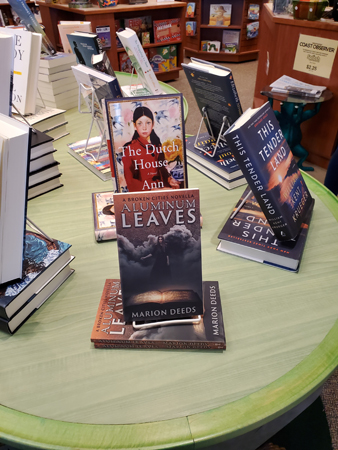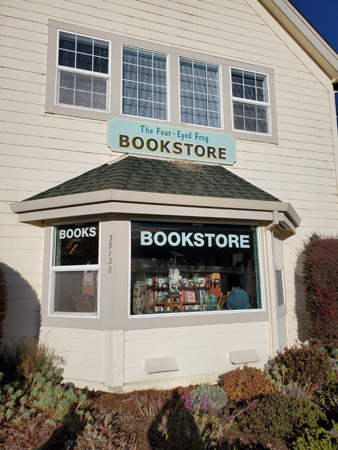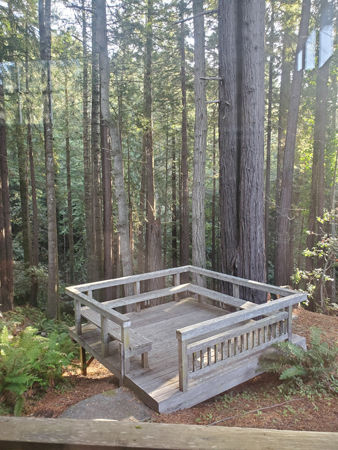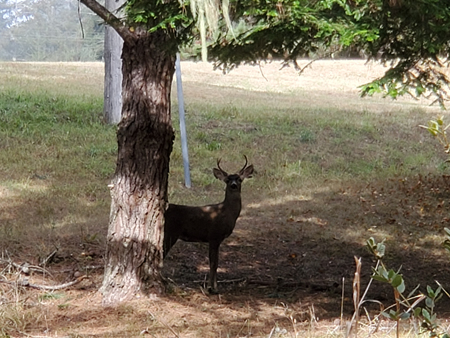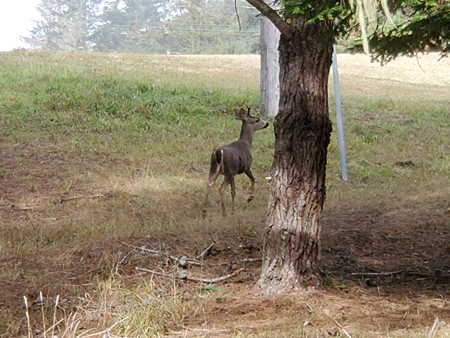Dublin Murders, the latest adaptation from Starz, disappoints. It’s based on two Tana French novels, In the Woods and The Likeness. The premise is that two deeply troubled Dublin Garda cops, both outsiders, are partnered and solve murders, only see “deeply troubled” above. It doesn’t end well.
I always try to separate an adaptation from its source material. For several reasons here, it was especially difficult, but I’m going to give it a try. Series One (and I assume the only series) of Dublin Murders has eight episodes in which British copper Rob Reilly and female copper Cassie Maddox try to solve two different murders. There is a third mystery in the story which I’ll get to in a minute.
Before I start listing all the things I didn’t like, I want to address the things I did. I liked the cast a lot. Sarah Green and Killian Scott, who play Cassie and Rob, are each brilliant and each fully embody their characters. Conleth Hill plays the Superintendent, who seems to dislike all his detectives. He does an awesome job of constantly insulting and demeaning Maddox while simultaneously automatically assuming she’s the best D on the squad, which is hard to sell, but he manages. On the occasions when Cassie calls him out on his sexism he seems genuinely bewildered. Tom Lawlor-Vaughn plays another cop, Frank Mackey – maybe a Superintendent?—who ran Cassie when she was undercover in another division, and he manages to create a character where the writing fails to give him one, so good job there.
I love the locations. The show was filmed in northern Ireland, so, good on you for that one too.
What disappointed me was the storytelling.
The series serves up three mysteries. The first one is in the story’s present day, which I think is 2006. A young woman from the suburban neighborhood has been found in the woods, on an ancient stone altar that has been excavated as part of an archaeological dig. The area, and the woods, are slated for removal for a road. The naked body of Katie is found posed on the altar. This is Mystery 1. About three or four episodes in, Frank Mackey appears and yanks Cassie off this headliner case to investigate the murder of a woman who looks exactly like Cassie and is using the “legend” or fake identity that Cassie created for herself when she was undercover. Mystery 2. And then there’s the Ur-Mystery, the disappearance of two neighborhood children from Katie’s neighborhood, last seen playing in those very same woods, in 1988. Three children, Jamie, Peter and Adam, went into that woods that day. Later, one of them, Adam, was found screaming and amnesiac, his shoes covered in blood (not his own) his T-shirt in shreds, with no knowledge of what happened. Both Rob and the neighborhood reach the conclusion that Katie’s death is somehow connected to the disappearance, and a search begins for the adult Adam, who, it turns out, is closer than you might think. This is not really a spoiler since we learn it in Episode 1: Rob is Adam, whose parents sent him away to a British boarding school in the months following the disappearance of his friends. Cassie, who’s in the know about this, points out that investigating Katie’s murder will put Rob’s fake identity at risk. Cassie immediately works out a plan where she will act all “feminine” and get the vapors and say she can’t work on a child murder, casually sacrificing her career to protect her damaged partner. This is the first stupid thing we see Cassie do. It isn’t the last.
Of course, if they bow out of the case, the show ends, and we’re only at Ep One. Instead, Rob decides that they are they are the only ones who keep the truth from coming out, and so they agree to see the case through.
For a couple of episodes, the show gets good. Rob and Cassie are both good, observant detectives. They are good interviewers and they work well together. Plenty of possible suspects are served up and the show squeezes in a subplot about the road, the people who want to stop the roadway and protect the trees. There’s a brief holdover of a case Cassie worked undercover, which hangs around like a stalkerish ex for a couple of eps.
In case we might have somehow missed that Rob is a traumatized mess, though, we soon start seeing Rob’s self-destructive behavior outside of work hours. Here is one of the most annoying things of the show; Rob dreams or hallucinates a wolf stalking him in his apartment. A wolf. We get more and more surreal flashbacks to the 1988 disappearance. Rob has dug out the old evidence boxes and is arranging the evidence in a fetishistic way… do you think we could figure out that he was troubled without dragging in a dog-actor? Rob, and really only Rob, has decided the death of Katie is somehow linked to the 1988 disappearance in the woods, even though the only thing these two crimes have in common is location. “They’re linked, they’re linked, they’re linked,” Rob chants, and of course he thinks they are because he’s, you know, obsessed, but they really aren’t. It’s Rob’s focus on the connections that suddenly brings Adam back into the public’s consciousness. This was good character development and good writing, and we didn’t need a big wolf-shaped neon sign to help us understand that Things Are Getting Weird Here.
I started worrying then, but I didn’t get really worried until Rob burns down his relationship with Cassie in a predictable fit of self-destructiveness, and Mackey swoops in to carry her off to work a completely different case. And then Mackey sets up a baroque and unnecessary undercover sting scheme where Cassie impersonates the woman who was impersonating her, or at least her fake identity (got that?). I’ll address the adaptation issue in the paragraph below, but there is almost no excuse for Mystery 2 in Dublin Murders. They have forensic evidence that “Lexie” was murdered at the fancy country house owned by a guy named Daniel, who invited four young people to live there with him and created a creepy kind of commune. Pretending that “Lexie” is alive and having Cassie play her is a stupid way to address the murder… and it sidelines Cassie from Mystery 1.
(As you might guess from the name The Likeness, the “Lexie” murder is just about how French’s book sets up. In the book, physical evidence is thin, and there is a better pretext for Cassie to go in. If Starz had chosen to devote an entire series to The Likeness, they might have made Mystery 2 work.)
For about four of the eight eps we watch Cassie and the others prance around a fancy country house, getting drunk, getting high, and sometimes going into town to harass the townsfolk who don’t like them. Daniel is some kind of a puppet master, but not very well defined, and spends most of his time pointing to things in the house and saying “Mine, mine,” like the seagulls in Finding Nemo. Cassie pokes and provokes the other housemates, and does fatally stupid things at the order of the script, because otherwise they can’t make the denouement of this transparently thin subplot work. (In a house where the primary suspect in a murder goes around saying, “This is mine, that is mine, this is all mine,” let’s talk about where Cassie decides to hide her gun, for instance.)
But since no one, including the showrunners, really cares about Mystery 2, it wraps up surprisingly quickly, and we go back to following Rob as he flails about and finally, nearly, solves the murder of Katie. Or, he does solve it, but doesn’t completely uncover the criminal mastermind who is running the murderer. Then he does that too, but the mastermind will only talk to Cassie, and then the mastermind blows Rob’s cover as Adam.
Now we’re roaring down to the dark and Irish ending. Cassie and Rob both colluded to keep Rob’s real identity a secret. Rob has physically attacked a couple of fellow cops. He sexually assaulted his landlady in a drunken state, he warned off a potential witness in the case of Katie’s death, and he keeps seeing a wolf. Rob’s a mess. Cassie shot a man to death in self-defense; she plans to blow the whistle on Mackey for his half-baked scheme; but really, since she’s the woman, she’s going to carry the consequences of Rob’s behavior. Both these cops should be gone from the job because they’ve got no ethics; however, at the end Cassie is back with her good boyfriend, who tells her everything’s going to be all right (although why he thinks that is anyone’s guess), and Rob, facing disciplinary action, is sent off somewhere into the hinterlands. I guess this is so that they can cobble together a Series Two, God help us.
But I haven’t gotten to the worst part yet. (Hard to believe, I know.) Rob runs into Mackey as the loggers and dozer-drivers arrive to start stripping the forest. Mackey gets a few snarky lines, and Rob asks him if they’re found any bones. Nope, no bones. Mackey did find this cool rock with a petroglyph though. It’s some Celtic folkloric character called The Child-Taker. He offers it to Rob, who refuses. Rob walks away, and Mackey stares into the woods, where a wolf stares back. It’s something old and dark and supernatural, and remember? We set this up, yes we did, back when Rob hallucinated a wolf!
Yes, yes, we get it. You couldn’t trust yourself with the Ur-Mystery so you made up a pathetic supernatural element to fall back on.
It’s nearly impossible to talk about how irritating those final images are without talking about the source material. In the book, the Ur-Mystery is never solved either. French took a big chance with that, in a debut novel, but she had the writing chops to make it work literarily even if we were all mad at her for it. She didn’t scrounge around to find a folkloric creature to hide behind. It might indeed be the woods itself, the ancient trees, the darkness, the ancient interconnected web of growth that is indifferent to humanity, but whatever it is, it doesn’t hand out rock business cards. What drives Rob into his particular literary-style madness is the never-knowing, and honestly, the tropes that cheapened his character from the start in this show begin and end with that stupid wolf.
To restate; the show is gorgeous and many actors deliver excellent performances in a thin story that relies too heavily on its cast to make up for poor storytelling. The supernatural element was badly foreshadowed with the wrong predatory animal, and Mystery 2 is a bad distraction with no value of its own. I hope Tana French got a good payday for this, and I hope Starz stops here before making things even worse.


